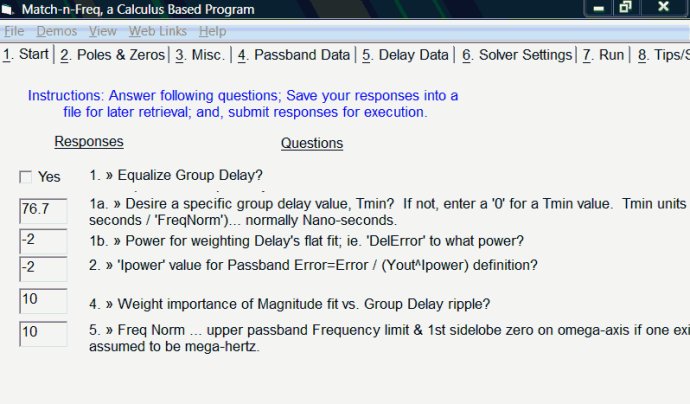This software program helps to locate the pole-zero locations of a transfer function for a matched filter. By calculating the signal ratio between desired output and input signals in the frequency domain, it enhances productivity by shaping the pulse for optimal performance.

The primary objective of developing this program is to minimize Intersymbol Interference in read/write channels for disc drives. It accomplishes this by creating and optimizing an isolated readback pulse. If you would like to delve into the details and understand this program thoroughly, you can refer to Kost, R. and P. Brubaker's article titled 'Arbitrary equalization with simple LC structures,' published in IEEE Transactions on Magnetics (Nov. 1981, pp 3346-3348). Alternatively, you can access this information by visiting the URL goal-driven.net/apps/matched-filter.html.
Another noteworthy addition to software development productivity is the integration of Calculus-level Problem-Solving. You can find a valuable textbook containing a wide range of industrial problems along with their solutions from the past two decades at goal-driven.net/textbooks/. Joe Thames, the software architect behind the Calculus Compiler, has developed an effective tool to enhance productivity. Using the FortranCalculus compiler, users can experience a twenty-fold increase in productivity, greatly enhancing the prospects for science and engineering graduates to secure future employment.
Overall, the Pulse Shaping Filter program and the Calculus Compiler are robust tools that greatly benefit both academic and professional software development. To explore these tools first-hand, visit goal-driven.net/textbooks/. Thank you!
Version 6.8:
Several equations found to have errors (from 1980!) … see ‘factor’ routine for more.
Group Delay definition on the internet changed the way it is calculated here …
Group Delay = - Partial[ H( j ω)] / ω … see ‘gDelay’ routine in ‘freq*.fc’ file.
Version 6.532:
Several equations found to have errors (from 1980!) … see ‘factor’ routine for more.
Group Delay definition on the internet changed the way it is calculated here …
Group Delay = - Partial[ H( j ω)] / ω … see ‘gDelay’ routine in ‘freq*.fc’ file.